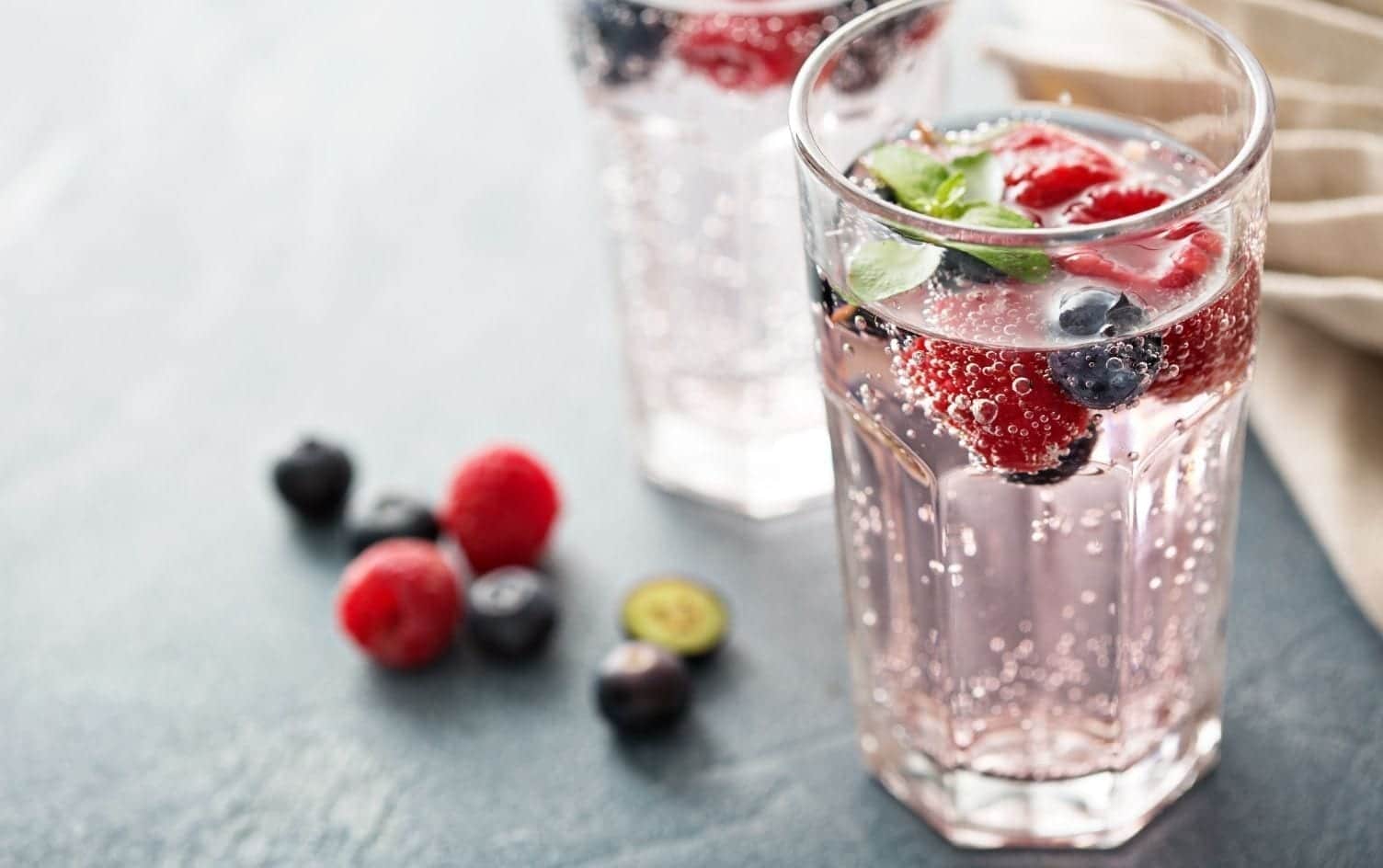Sipping on water is essential for staying hydrated and promoting overall health, and it’s no secret zero-calorie flavored waters — whether sparkling (like LaCroix, Waterloo or Poland Spring) or flat (like Hint) — are big right now. The fizzy finds seem like a great way to mix up your H20 intake, especially if you’re the type of person who thinks regular water is too plain and boring. These waters are flavored, but they don’t contain any added sugar, artificial sweeteners, dyes or caffeine.
Each brand has its own unique taste and offers a different menu of flavors. For instance, Poland Spring has a lemon ginger, LaCroix Curate offers blackberry cucumber and Waterloo debuted grape earlier this year, which means there’s likely a flavor for everyone. “Sparkling water counts toward your daily [water] intake needs,” says Ginger Hultin, RD, spokesperson for the Academy of Nutrition and Dietetics and owner of ChampagneNutrition in Seattle.
If you’re aiming to cut back on soda or diet soda, they also make a smart — and relatively seamless switch. They’re bubbly and slightly sweet, so it won’t be as big a shock to your taste buds. “When used as a replacement, these waters are a better option than soda because they’ll reduce overall sugar intake in the diet,” says Hultin. In some instances, you might also want to use them in a mocktail to replace alcohol if you’re trying to cut back.
Here, a deeper dive into the ingredients, whether it’s OK to sip on zero-cal water all day and what to look for when you’re at the grocery store:
WHAT’S REALLY IN ZERO-CALORIE WATER?
Glancing at the ingredients list, you’ll see a couple of ingredients, including water (obviously) and “natural flavors.” The role of these natural flavors is what gives black cherry flavor the taste of sweet cherries and grapefruit its refreshing citrus zing. But knowing exactly what “natural flavors” are is confusing — for everyone.
“Flavors are molecules that add the taste of a certain food without actually adding that food into the product,” explains Hultin. If you’re drinking lemon sparkling water, no one squeezed real lemon in it. “Instead, it’s flavored to taste like lemon,” she says, adding that the U.S. Food and Drug Administration doesn’t require ingredients labels to list exactly what these “natural flavors” are made of.
The FDA says these natural flavors can be derived from a whole list of places, including spices, fruits, vegetables, edible yeast, herbs, bark or a part of a plant. “While it’s inevitably better than sugar-sweetened beverages and artificial sweeteners, it’s still not the same thing as infusing water with fruit yourself, where you know exactly what you’re getting,” points out Amanda Lloyd, RD.
CAN YOU DRINK ZERO-CALORIE WATER ALL DAY?
Even if your budget allows you to forgo plain water in favor of these zero-cal waters, you don’t want to make them your sole beverage — even if bubbly lime is far more exciting. Citrus-flavored waters can be more acidic, which can wear on the enamel on your teeth, which is why “the majority of your fluid intake should be regular water,” says Hultin.
HOW TO MAKE THE BEST CHOICES IN SIPS
“Drink water with no added color, sugar or artificial sweeteners,” says Hultin. Just because it has zero calories and looks clear does not guarantee it’s free of artificial sweeteners, she adds. So, always read the ingredients list to be sure. “Avoid those that contain no-cal sweeteners, such as aspartame or sucralose.” The ingredients list should also be very short — think water, carbonation and natural flavors.




